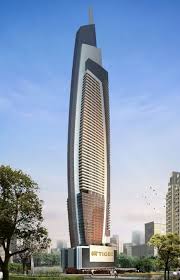As talk of economic revival and investment opportunities spreads across Syrian cities, ambitious reconstruction projects are being proposed—some grounded in practical needs, others drifting into architectural delusion.
On the surface, this development drive offers hope. But beneath it lies a deeper anxiety about the fate and identity of Syrian cities—Damascus, Aleppo, Homs, Hama, and Deir ez-Zor—that have not yet healed from the trauma of war, or from the architectural vandalism that preceded it.
For decades, Soviet-inspired Ba’athist urban planning stripped these cities of their character. Instead of preserving their unique identity, it cast them into grey concrete sprawl—soulless suburbs that neither serve beauty nor memory. Today, we face a crossroads: will reconstruction honour these cities’ legacies, or will it continue the erasure, disguised as renewal?
We do not oppose reconstruction. We oppose the distortion masquerading as reconstruction. This is not simply about infrastructure—it is a battle to save our cities from a second, more subtle destruction.
Damascus and Aleppo—among the oldest continuously inhabited cities in the world—are home to archaeological strata of immense civilisational value, buried both in the soil and the psyche. Any plans for metro systems or deep foundations in their historic cores should be scrutinized, not celebrated. No technological ambition or economic rationale justifies the endangerment of these irreplaceable layers of human history.
Yes, we need traffic solutions, housing, and better urban management. But the answer does not lie in erasing our cities’ visual memory, or in mimicking Gulf skylines with disjointed towers. The rumoured “Trump Tower” in Baramkeh—if real—would be a visual catastrophe, overshadowing the Suleymaniyeh Tekkiye, the Hamidiyeh Barracks, and Halabouni Square—just steps from the Umayyad Mosque and the heart of Old Damascus.
What we need is not reckless modernisation, but a modernity that respects heritage—a conscious modernity. I call upon the Antiquities Societies of Aleppo and Homs, the Friends of Damascus Association, and every remaining defender of Syria’s architectural legacy to act. This is no longer a technical debate. It is a battle for identity and civilisational dignity.
Paris didn’t plant glass towers in the Latin Quarter. It built La Défense. Berlin preserved its historic core even while embracing modernity. Why should we, heirs to some of the world’s most ancient capitals, sacrifice our past at the altar of haste and profit?
Again, we do not oppose reconstruction. We oppose the distortion masquerading as reconstruction. The battle is to protect what remains of our cities before it’s too late.
Take, for example, the recent demolition order targeting the 1950s-era Damascus Governorate building—a civic landmark anchoring Youssef al-Azmeh Square. Though reports suggest the order may have been reversed, its very issuance—without public consultation—raises urgent questions:
Were alternatives discussed with residents, or even with architectural professionals? Was there a proper assessment of the area’s infrastructure and traffic capacity? Might it not have been wiser to relocate the governorate to a suburban site, as Egypt and Iraq have done with key ministries?
Reconstruction is not a contest of glass and steel. It is a test of consciousness. Cities are not blank canvases for investor fantasies.
Relocating ministries away from overcrowded historic cores is a strategy employed by many major cities. It relieves pressure and allows old quarters to breathe. But what will now rise in the Damascus governorate’s place? Will it reflect the elegance of Ottoman Damascene architecture—like the old Justice Palace—or the dignified modernism of the 1950s and ’60s? Or will we see another soulless tower, another monument to disfigurement?
Damascus, like Aleppo and the rest of Syria’s ancient cities, is more than a place. It is a tapestry—visual, intellectual, and spiritual. It cannot withstand more damage. It does not belong to a vision of modernity that sees architecture only as steel, cement, and spectacle.
Beneath its streets lie buried marvels. Every deep excavation—whether for metro tunnels or high-rise foundations—threatens irreversible loss. We must plan not just for what is above ground, but for the fragile, sacred strata beneath.
This is not an intellectual luxury. It is an urgent call—for transparency, participation, and a sense of civic belonging. If we are to rebuild, let us not begin by demolishing memory. Let us ask the cities themselves what they wish to become—for they remember far more than any blueprint.
Do not allow nostalgia to become a form of passive resistance. Let it instead guide us toward what must never be lost.
This article was translated and edited by The Syrian Observer. The Syrian Observer has not verified the content of this story. Responsibility for the information and views set out in this article lies entirely with the author.


